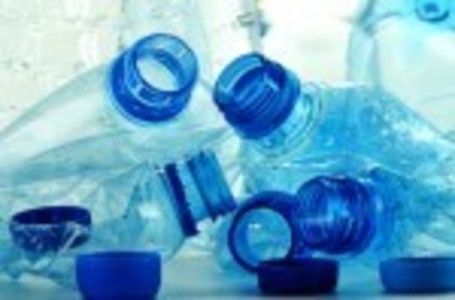Unless you have been living under a rock for the past ten years, you probably know about BPA. Bisphenol A is a chemical used in the manufacturing of some hard plastics and liners for canned foods, including infant formula. In recent years, more and more plastic products, especially items like baby bottles, have adopted the “BPA-free” label. Why? It turns out that BPA mimics some effects of estrogens in the body. BPA and chemicals like it, known collectively as endocrine disruptors, have been implicated in a disturbing variety of health problems, ranging from early puberty to cancer. The U.S. Food and Drug Administration banned the use of BPA in manufacturing of baby bottles and sippy cups in July, 2012. However, its use in can liners and other plastic products is still essentially unregulated. The science of endocrine disruptors is still in its infancy, and consumers are left to decide what constitutes an acceptable level of exposure. So, how concerned should we be?
Is BPA Safe?
This turns out to be a complicated question. The vast majority of studies on BPA and other endocrine disruptors have been done in rodents, whose endocrine systems are not equivalent to those of humans. Many of the early studies of these compounds exposed animals to doses much higher than humans might ever experience or administered the compounds via routes that were unlikely in humans (e.g. intravenously). There was also a widespread lack of consistent methodology across studies, with different labs examining different endpoints, so that results were nearly impossible to compare and interpret. Recent efforts by the FDA, National Institutes of Health and Centers for Disease Control have helped to coordinate multiple, large scale studies and improve methodology.
The Good News and the Bad News about BPA
Based on these more recent studies, there’s good and bad news. The good news: recent estimates of exposure levels for infants are 10-fold lower than previous estimates (0.24 micrograms/kg body weight/day vs. 2.4 micrograms/kg body weight per day) [1]. This may be partly due to increased inaccurate assumptions about how parents prepare bottles. Also, studies in primates, whose endocrine metabolism is closer to humans, suggest that most orally-administered BPA is rapidly metabolized to an inactive form and excreted [2].
Now, the bad news. A recent study, in which pregnant rhesus monkeys were exposed continuously to low concentrations of BPA, similar to those found in human tissues, found that the ovaries of female fetuses had more unenclosed follicles [3]. This could mean that the female offspring of exposed monkeys would have fewer viable eggs and diminished reproductive success as adults, though this study did not follow the offspring to adulthood. Another study examined the effects of BPA on human breast epithelial cells grown in culture [4]. BPA increased expression of genes involved in DNA repair, including the BRCA1 and BRCA2 genes. Women who carry specific mutations in these genes are at five times greater risk for developing breast and ovarian cancers than the general population. The study suggests that women who carry these mutations may be unable to repair DNA damage induced by BPA and may be especially vulnerable to its effects on estrogen-sensitive tissues.
How Concerned Should We Be about BPA?
So, back to our original question: how concerned should we be? While exposure levels are probably fairly low, and much of the BPA we ingest is likely metabolized, there are certain populations, including pregnant women, infants and women at high risk for breast and ovarian cancer, who should be especially concerned. In the absence of tighter regulatory controls on BPA use in manufacturing, there are simple steps consumers can take to reduce their exposure. Bottom line, am I going to stop buying canned foods? Not entirely, but fresh is always nutritionally superior to canned anyhow. Do I buy BPA free bottles for my infant son? Absolutely. Do I spend a lot of time worrying about my family’s exposure to BPA? No. Not because it’s not important, but because there are many other known endocrine disruptors in our environment, and probably many more that haven’t yet come to our attention. BPA is just a small piece of a very complex puzzle.
References
[1]Department of Health and Human Services. Memorandum: Exposure to Bisphenol A (BPA) for infants, toddlers and adults from the consumption of infant formula, toddler food and adult (canned) food. 2009
[2]Doerge D.R., Twaddle N.C., Woodling K.A., Fisher J.W. Pharmacokinetics of bisphenol A in neonatal and adult rhesus monkeys, Toxicology and Applied Pharmacology 2010; 248: 1–11.
[3] Hunt P.A., Lawson C., Gieske M., Murdoch B., Smith H., Marre A., Hassold T., Vandevoort C.A. Bisphenol A alters early oogenesis and follicle formation in the fetal ovary of the rhesus monkey. PNAS USA; 2012 Sep 24. [Epub ahead of print].
[4] Fernandez S.V., Huang Y., Snider K.E., Zhou Y., Pogash T.J., Russo J. Expression and DNA methylation changes in human breast epithelial cells after bisphenol A exposure. International Journal of Oncology 2012; 41(1): 369-77.











